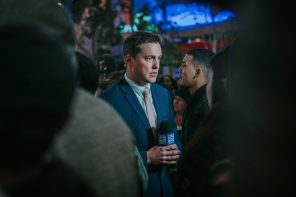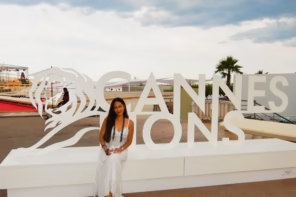
Tuesday May 24, 2016
Inspiring Mavens | Dr Shini Somara
Mechanical engineer and television presenter, Dr Shini Somara discusses women in science, technology,engineering and maths (STEM) and how she transformed her passion for science and technology into her dream job.
What first inspired you to pursue a career in mechanical engineering?
My father is so inspirational to me! He himself is a talented mechanical engineer, and because I am the eldest of his three daughters, I was always the one helping him with DIY around the house and garden. When I was growing up, he would often encourage me to figure out why things worked or didn’t work and problem solve. My mum probably got annoyed when I disassembled my toys and other household gadgets, but Dad and I found it fascinating. The only exception was when I took a camera apart – in those days, cameras used film, so I damaged all the photos. That right-sized my unruly curiosity!
Engineering is often seen as a male dominated industry. How, from your perspective, has this changed and what can be done to encourage more young women to pursue science- and technology-related professions?
When I studied MechEng at Brunel University, there were 130 students in my year and only 9 of us were girls. I’ve watched science, technology, engineering and maths (STEM) undergrad departments shrink or close down, due to the lack of students – male or female – studying these subjects. But I have also seen more vocational engineering courses pop up – which is very exciting. STEM subjects can be challenging at university level, so STEM talent must be developed at an early age in schools. Girls tend to be great at maths and sciences, but all students should be encouraged to pursue their curiosity and interests in STEM even if it’s outside of school hours. I wonder if the National Curriculum has time to allow students to be inquisitive, experimental and to handle failure; all of which are necessary tools in the sciences, particularly in engineering.
I would encourage scientifically curious students to join STEM clubs and/or take internships in companies that interest them. I recommend they find mentors they admire, people who can show them the ropes and share their experiences. [bctt tweet=”Nothing is more important than getting real-life hands-on training” username=”curzonpr”] I often worked at my father’s company, and even though he was a tough boss I learned so much about the profession and about myself. He was the ultimate mentor.
There’s so much information online to satisfy your STEM curiosity too. Make use of what’s out there to improve your STEM skills – including Crash Course Physics – which will help you get those essential qualifications needed – but also company websites and their outreach programs. Make use of Google; I only had libraries, dial-up telephones and a postal service to figure this stuff out – it was gruelling!
Describe a typical working day for a science and technology television reporter.
To make the best use of available daylight, working days usually start at the crack of dawn, and we often film in weird and wonderful locations outdoors. This is perfect for me because I’m an early bird! In the days leading up to the shoot, research and preparation are thorough to ensure I know everything about the science subject and the story I want to tell.
Filming days are usually long, 12 hours or more sometimes. These days we shoot with small crews, so the cameraman often records the same interview three or four times from different angles. That means that the same interview is repeated three or four times – I’m very used to this now, but often the scientists I interview find this very strange! Occasionally, I have shot interviews with multiple cameras involved, but that is a very expensive way to produce content.
Lunch is usually gobbled down whilst moving from one location to another, and we tend to finish filming when the sun goes down (if outside). If we’re filming the next day, I usually try to get to bed as soon as possible, as tiredness is very obvious on camera.
At the end of a shoot we usually have a good crew celebratory dinner. One of the best shoot endings I had was in Greenland, where I stayed up through the night to see the Northern Lights before my 6am return flight home – sacrificing sleep that night was well worth it! The Northern Lights are magical.
What is your best advice for future television reporters seeking to specialise in science and technology?
Genuinely love the subjects you report on and share that love with others! That’s my advice for any career in reporting!
What innovations are you currently most excited about and what new projects can we expect from you in the immediate future?
I have a fascination with drones at the moment. How they are built, how they work and the inventive ways they are being put to use. It’s a very emerging market at the moment. There are many exciting things we can do with them. Poaching control, climate change monitoring over volcanos and schools of whales, autonomous delivery… the possibilities are amazing.
At the end of May, a documentary on the Battle of Jutland comes out on BBC2 with historian Dan Snow. This summer I’ll be shooting a series on the Orkney Islands with historian Neil Oliver, which will air in October on the BBC. My physics weekly series with PBS Digital began this April and is 48 episodes long. It’s great for anyone needing further assistance in physics A’level or AP1/2. #crashcoursephysic
Curzon PR is a London-based PR firm working with clients globally. If you have any questions, please feel free to contact our Business Development Team bd@curzonpr.com






Follow us